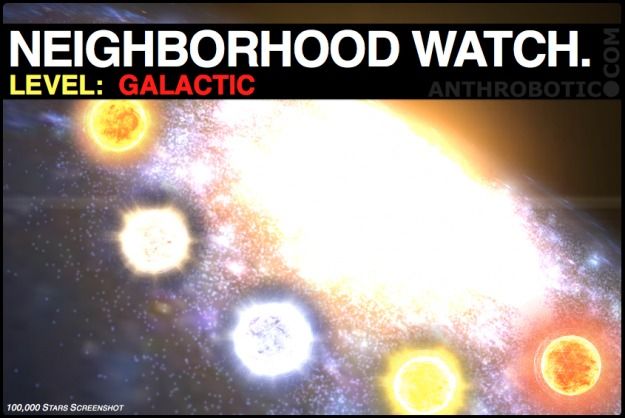I commented on another blog recently about visiting Titan;
I do not know the pressure in these possible liquid oceans. But if it is, for example, 2 or 3 times that of the Marianas Trench then it is certainly a daunting proposition to explore them with human crewed submarines.
Tremendous pressure would mean transporting a titanium sphere several feet thick there. Not an incredible solution if you make it out of Lunar Titanium and Lunar Solar Power.
After reading Ozzie Zhener’s Green Illusions and the Dan Criswell Lunar Solar Power concept web entries I am becoming skeptical about any other possible approach having any relevance in my lifetime. I turned fifty recently and though they sent John Glenn on a mission, I am not confident of any migration into space anytime soon. This is a case of a 7 year old boy watching Star Trek and believing it might be something like this when I got as old as Bill Shatner was.….is.
If you trouble shoot the problem and use a decision tree to find solutions from a survey of available technology it becomes clear that the contender technologies are either available or readily available in the form of improved copies of half century old prototypes.
If you want to launch a program of under ice manned submarine expeditions to the outer planet moons you would have to start with a huge program of super heavy lift vehicles. This may sound expensive but unlike any other existing approach this single inflexible path has the potential of a hundred thousand fold return on investment.
By landing payloads at the lunar polar ice deposits, the exploitation of Lunar Solar Power resources can begin. I want Greenpeace, and every environmental conservation group that exists to understand that they can have there every dream come true if they ruthlessly exploit the solar energy striking the Moon’s surface. It should be understood that the Moon is dead. It is kind of like Nietsche saying God is dead and God then saying Nietsche is dead; do not worry about polluting the Moon- it is dead.
Once there is Lunar Solar Power to melt ore then large structures can be created. These gargantuan solar energy devices will rapidly cover vast swathes of the lunar surface. The more energy that pours into the metal shops the more energy will be produced for new metal shops. After the energy is available come the microwave transmitting antennae fields. Finally come the space power relay battle stations; these must launch to Earth geostationary orbit. Ever larger battle stations from the Moon will park themselves above a certain spot on the Earth where receiving dishes the size of entire valleys are being built. At some point done the road a river of clean electricity begins to flow from the Moon to Earth.
This rainbow bridge of microwave energy from the surface all the way up to geostationary orbit means powering a beam propulsion launch system of several thousand Isp with power all the way from the Moon. How quickly this airline to space begins operation depends entirely on the resources put into it. Exactly what proportion of this electricity shall be dedicated to establishing new worlds in space?
Though it seems impossible for us to imagine, after every single human being on Earth has a very high western standard of living, what will we do with the excess power? If that Lunar Solar Power is geometrically increasing and feeding itself by adding ever increasing and phenomenal amounts of electricity will it be shut down at that point?
I believe when the full of potential of space is explained to the public and they are convinced then no one will stop a geometric progression of Lunar Solar Power to facilitate new projects. The next big project will be constructing large structures in space at the nearest Libration point. Proposed in 1929 the Bernal Sphere may be a simple structure to melt with microwaves in zero gravity and form into a miles- in-diameter hollow sphere. How many miles in diameter is the question.
When the optimum form and thicknesses of the shell or shells-inside-the shells is determined this will determine the diameter of the sphere. Spheres 20 or 30 miles in diameter have the prospect of being a multi-purpose vehicle; Not only can they act as power relay stations but they can support populations of at least thousands in deep space. Propelled by H-bombs this first product of the industry of the Moon may fill many roles from the start a chain of these hollow moons will stretch out in solar orbit from the Earth.
Human beings have a lot of problem with scale. It takes a certain open mindedness to embrace construction projects of such vast scales. But we have only to look at the pyramids in Egypt to understand that large goals have been met since civilization has been in existence. The numbers tell us this chain of hollow moons can contain larger and larger populations as they grow in sized. If it is actually possible to feed materials into a solar furnace and blow up balloons several miles in diameter then the next factory to build may be around Mercury. Greenpeace may have trouble getting tourists to visit the abandoned Earth.
If all else fails, there is sports. Decades ago I read a short story, called “Moonball” I think, and it had professional sports played in superdomes under the Lunar Surface and televised to Earth.
We could have only females of chilbearing age allowed on the Moon and have them play sports. So if there is an engineered pathogen or the planet killer comet or asteroid hits or a super-volcano lights off the next ice age, we will always have our amazon women on the Moon to save our species.





